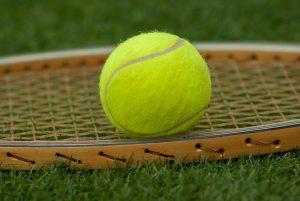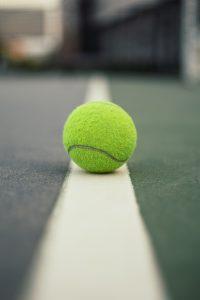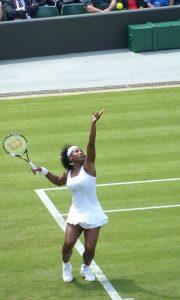We may earn money or products from the companies mentioned in this post.
Brief Overview of Tennis as a Sport

Tennis is a widely popular sport, with millions of people around the world actively participating in it Known for its fast-paced nature and strategic gameplay, tennis offers numerous benefits to players both physically and mentally From improving cardiovascular fitness and coordination to enhancing mental focus and discipline, tennis provides a well-rounded workout for individuals of all ages
However, mastering the game of tennis requires dedicated practice and continuous skill development It is not just about hitting the ball back and forth; rather, it involves precise footwork, shot placement, strategy, and adaptability to various playing styles Regular training sessions are essential for players who wish to improve their skills and reach their full potential on the court
Challenges Faced by Solo Players

While tennis can be enjoyed as a singles or doubles game, solo players often face unique challenges that can hinder their progress
1 Lack of Training Partners or Opponents
One major challenge faced by solo players is finding suitable training partners or opponents to practice with regularly Unlike team sports where teammates are readily available for practice sessions, individual athletes may struggle to find someone at the same skill level or commitment level to train with consistently
Hitting against a wall or using ball machines can provide some practice opportunities but cannot replicate the dynamic gameplay experience that comes from playing against real opponents The absence of regular competition can hinder improvement in areas such as match tactics, reading an opponent’s shots, and adapting strategies accordingly
2 Limited Access to Facilities
Solo players may also encounter difficulties in accessing proper tennis facilities such as courts and coaching resources Depending on location and availability, finding suitable courts for regular practice sessions can be challenging
Additionally, solo players may face limitations in terms of accessing professional coaching or guidance Without proper instruction and feedback, it can be harder to identify and correct technical flaws or develop more advanced skills
Overcoming these challenges requires creativity and resourcefulness Solo players can explore alternative training methods such as online tutorials, virtual coaching sessions, or joining tennis clubs and communities to connect with like-minded individuals who share a passion for the sport
By actively seeking out opportunities to practice with different players and utilizing available resources effectively, solo tennis players can continue to improve their skills and enjoy the game they love
Methods for practicing alone

Wall practice
When it comes to practicing tennis alone, one of the most accessible and convenient methods is wall practice But not all walls are created equal Depending on the material, each wall type offers its own advantages and disadvantages Concrete walls provide a solid surface that mimics the court’s bounce, while brick walls offer a bit more grip for better control On the other hand, plywood walls can be easily set up and adjusted to your desired height
However, it’s important to consider safety precautions when using different wall types Make sure the wall is in good condition without any loose bricks or cracks that could cause injury It’s also advisable to wear protective eyewear to prevent any accidents from flying debris
Once you’ve found a suitable wall, you can work on different strokes such as forehand, backhand, and volleys Each stroke requires proper technique and stance for maximum effectiveness Focus on maintaining consistency and accuracy in hitting the ball against the wall by adjusting your footwork and swing mechanics
Ball machines and rebounders
If you’re looking for a more advanced solo practice option, ball machines and rebounders can take your training to the next level
Ball machines come in various types including portable and stationary models These machines are designed to simulate real-game situations by controlling speed, spin, trajectory, and feed rate of balls They offer an excellent opportunity to work on specific shots or improve reaction time by adjusting settings according to your training needs
In addition to ball machines, rebounders are another great tool for solo practice sessions Available in different designs such as nets or panels that return the ball with varying degrees of force, rebounders allow you to engage in continuous hitting without having to retrieve the ball They provide a more realistic training experience and offer advantages over traditional wall practice by simulating the unpredictability of a live opponent
When considering different models of ball machines or rebounders, functionality and price are important factors to consider Compare their features, such as speed control, spin options, and durability, to find the one that suits your specific requirements and budget
By incorporating these methods for practicing alone into your training routine, you can make significant progress in improving your skills and overall performance on the tennis court
Fitness and Endurance Training for Solo Players

Cardiovascular Exercises
When it comes to improving your fitness and endurance as a solo player, cardiovascular exercises should become your best friend Not only do they enhance your stamina, but they also contribute to overall cardiovascular health One of the simplest yet most effective forms of cardio is running or jogging
Running or jogging helps build stamina by increasing your heart rate and oxygen intake It strengthens your heart and lungs, allowing you to endure longer periods of physical activity on the court To see significant improvements, aim for at least 30 minutes per session, gradually increasing the duration over time
If you’re looking for a more intense workout that specifically targets speed and agility on the court, consider high-intensity interval training (HIIT). HIIT involves short bursts of intense exercise followed by brief recovery periods This type of training not only improves cardiovascular endurance but also enhances explosiveness and quickness during gameplay
To give you an idea, here’s a sample HIIT workout tailored for tennis players:
- Sprint at maximum effort for 20 seconds
- Rest for 10 seconds
- Repeat this cycle eight times
This workout can be adjusted based on your fitness level and can be done on a treadmill or outdoor track
Strength Training Exercises
In addition to cardiovascular exercises, strength training plays a crucial role in enhancing performance as a solo player By targeting key muscle groups used in tennis, you can improve power, stability, and prevent injuries
For upper body workouts, focus on exercises like push-ups, pull-ups, and shoulder presses These movements engage muscles such as the chest, back, shoulders, and arms – all essential for executing powerful shots on the court Remember to maintain proper form throughout each exercise to maximize effectiveness and reduce the risk of injury
Lower body strength is equally important for stability and explosive movements in tennis Incorporate exercises like squats, lunges, and calf raises into your workout routine These exercises target muscles in your legs and help improve leg strength, agility, and balance – all crucial elements for swift movements on the court
Lastly, don’t forget to incorporate balance exercises into your training routine Balance is key for stability during quick changes in direction and maintaining a strong foundation while playing solo Try incorporating exercises such as single-leg stands or yoga poses that require focus and core engagement
Mental Preparation and Strategy Development for Solo Players

When it comes to excelling in sports, mental preparation plays a crucial role in overall performance One effective technique that solo players can utilize is visualization By harnessing the power of mental imagery, athletes can enhance their sports performance by creating a vivid picture of success in their minds It allows them to mentally rehearse movements, strategies, and outcomes before stepping onto the court
But why is mental imagery so important? Well, studies have shown that the brain cannot distinguish between real and imagined experiences By visualizing successful shots or executing flawless techniques, players stimulate the same neural pathways as if they were physically performing those actions This helps build muscle memory and boosts confidence on game day
To make the most out of visualization practice, solo players should follow a few steps Firstly, find a quiet space where you can relax and focus without distractions Close your eyes and imagine yourself playing your sport with precision and excellence Engage all your senses – feel the racquet in your hand, hear the satisfying sound of hitting the ball just right, smell the fresh air on the court The more detailed and realistic your visualization is, the more effective it will be
Study Professional Matches
Gaining insights from professional matches is another valuable strategy for solo players looking to improve their performance By analyzing top players’ strategies during matches, you can learn from their expertise and adapt those tactics into your own game plan
Start by identifying patterns in opponents’ play – observe how they respond to different situations or shots Look for weaknesses that you can exploit during your own games Perhaps there’s a specific shot or area of the court where they struggle? Use this knowledge to develop counter-strategies that give you an edge over your opponents
In addition to observing live matches, watching instructional videos or reading tennis books can provide valuable insights into the techniques used by experts in the field Learning new skills and strategies from these resources allows you to expand your repertoire and improve your overall game Take note of any tips or advice given by experienced players or coaches, and implement them during your practice sessions
Setting Goals and Tracking Progress
Goal setting is a fundamental aspect of self-improvement in any endeavor, including sports For solo players, it’s crucial to set SMART goals – Specific, Measurable, Achievable, Relevant, and Time-Bound These types of goals help you stay focused and motivated throughout your training journey
When setting goals for improvement, be specific about what you want to achieve For example, instead of saying “I want to improve my serve,” specify how many successful serves out of ten you aim to achieve within a certain timeframe This specificity makes it easier to measure progress objectively
Regular self-assessment is key in tracking progress towards your goals Take time to reflect on your performance after each practice session or match What worked well? What areas need improvement? By identifying strengths and weaknesses, you can adjust your training plan accordingly and continue progressing towards mastery
Useful Links

How to practice tennis alone?
How to Play Tennis Alone – Maximize Your Practice
10 Fun Tennis Drills You Can Practice Without A Court
Tennis Wall Lessons
Tennis Wall Training – Improve Your Tennis Using A Wall
Can You Learn Tennis By Yourself? (Easy Guide)
9 Best Tennis Drills You Can Do Alone (On & Off The Court)
8 Effective Ways to Practise Table Tennis Alone
Best Tennis Training Equipment
Top Activities For Dogs With Owners Who Like Tennis
Tennis Drills That Can Improve Your Game. Nike.com
How to Play Table Tennis Alone? 8 Great Tips for You!
How To Practice Table Tennis Alone
10 Ways to Practise Tennis at Home • TennisAvid
Find Tennis Courts, Clubs, Camps, Lessons & Programs
Is Tennis Good Exercise? All You Need to Know
The 13 Best Tennis Training Aids | Reviews & Buyer’s Guide
8 easy ways to play tennis—without a court – Reviewed
Tennis – Struggling Sports – USA TODAY NETWORK News






